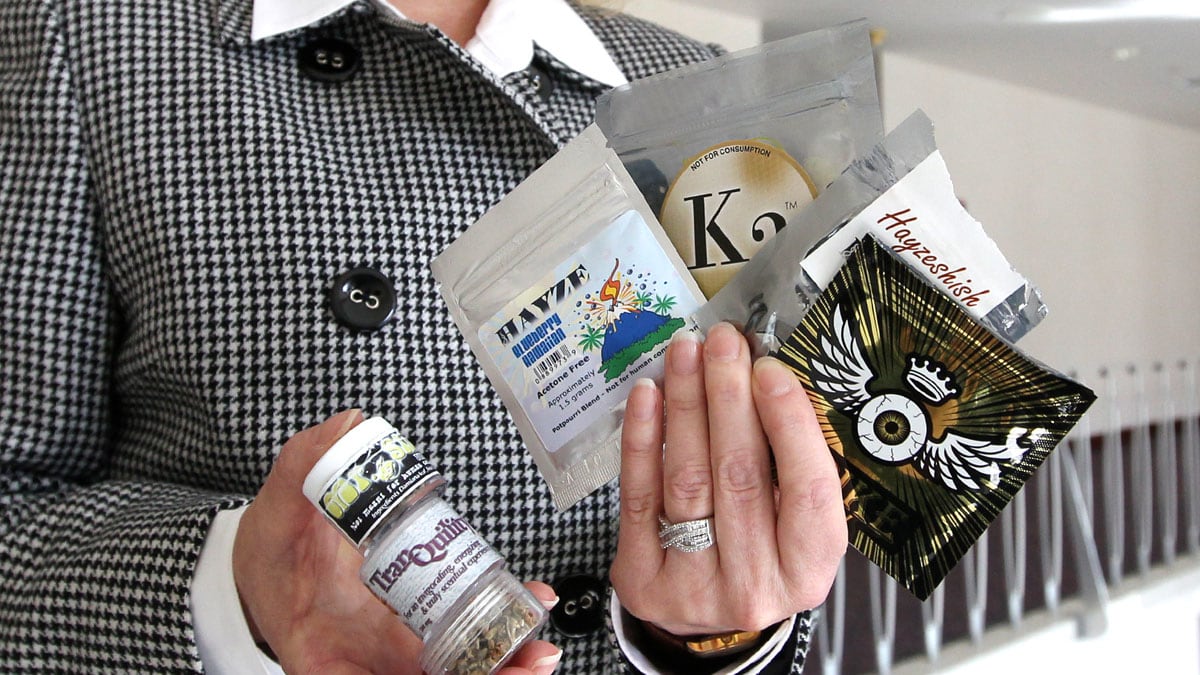The recent story from Miami of Rudy Eugene, the man who ate part of the face of Ronald Poppo, represents a remarkable moment in U.S. news. It merges seamlessly the irresistibly lurid, the uncomfortably lurid, and the so-completely-lurid-as-to-be-no-longer-faintly-comic in a single ultramodern, even futuristic story. It’s all here: we have security cameras (what were they doing there?), insanity, tragedy, dangerous new synthetic drugs, and a video record of the entire affair. How much excitement can we pack into a single sad tale?
Plus everything about the drugs in question—so-called “bath salts"—is all-American. Bath salts are a homebrew product right out of Breaking Bad: a hallucinogenic powder made by some lost chemistry major with pushy friends and serious debts. But please note that the implicated “bath salts” have nothing to do with actual bath salts, those crystalline things your parents brought your creepy aunt in New Jersey every time they visited. No, these bath salts never were meant to soften the skin, if that was the hope of the creepy aunt.
The current rendition of “bath salts” is part of another proud American tradition—false advertising. The drug dealers who make the stuff found a simple loophole—make a street drug with an enormous profit margin but give it the name of a boring household product, just to keep it below radar. And it worked, for a few years; who knew why teens were suddenly so interested in running to the store for bath salts when they weren’t spending any time in the tub and who cared? A perfect ruse in all ways, relying on the winning combo of inattentive old people and sneaky kids—though it is likely that the publicity around the case will lead to a crackdown against their production and a wising-up by parents and cops everywhere.
In addition to all the side stories, the awful tale raises a basic question: could all the drugs in the world make a person want to eat another person? This is not as simple as we would like. Our fascination with and repulsion for cannibalism reach far back, farther even, than its tepid cousin, vampirism. It seems human have been worried about eating each other for the longest time, a primal yearning and repulsion no team of van Dyked psychoanalysts could begin to unravel. It goes back to the Greeks at least, when Zeus’s dear old dad, Cronus, was so worried about the prophecy that his child would overthrow him that he did what any worried parent would do—he ate all his children. Fortunately for Western civilization, Zeus (and Rhea, his mother) were a step ahead, feeding him a rock in Zeus’s place, thereby allowing Zeus to dodge ingestion, save his partially digested sibs and become king of the world.

The taste of human meat has been commented upon by a few observers along the way. The most detailed (and possibly apocryphal) mention was the result of an investigation by the journalist William Seabrook, who allegedly purchased a slab of a newly dead person’s thigh expressly for cooking and reporting. He claimed that human tasted like veal—a dubious assertion given that veal, from calves, derives much of its tenderness and sweetness because the muscles have not had long to develop. Generally, meat gets stringier, gamier, and less tasty as the animal ages: compare mutton (an old sheep) to lamb. The latter is delicious whereas the former lives on only in the British kitchen of terror.
It is extremely unlikely that in “bath salts” we have found the key that will unlock an epidemic of cannibalism. Rudy Eugene is a singularly sad person who met a singularly sad end. The exact chemicals in bath salts vary, but all seem to be first cousins of the amphetamine class of agents that debuted 10-20 years ago as crystal meth. With the crackdown on pseudoephedrine (Sudafed) and other cheap products used to make crystal meth, as well as its sinking street rep, those in the recreational drug synthesis business moved on to more chemically complex variations. Enter “bath salts.”
Most types of this generation of bath salts contain Methylenedioxypyrovalerone (MDPV), a synthetic designer drug with lots of hipster insider nicknames (Super Coke, MTV, etc) and the ability to induce a mind-rattling hallucination. This and its ever-increasing set of cousins on the synthetic drug market—beginning with Ecstasy (methylenedioxymethamphetamine or MDMA), progressing to mephedrone (4-MMC), methylone (M-1 and a close relative of Ecstasy) and straight-up pyrovalerone (the core of MDPV)—can mimic the effects, pleasurable and profoundly not, of amphetamines, cocaine, and LSD. For some, perhaps, either because they are predisposed or because the dose they consumed was too great, bizarre, self-destructive, and violent behavior has occurred. But the urge to gnaw, no. That falls outside the understandable.
We may see more horrible moments however. The feds are aware of “bath salts” and plenty worried. In October last year, the Drug Enforcement Agency (DEA) banned their sale. In a reassuring twist, Forbes, that Tea Party precursor, called on the government to regulate production, and quick! (though noting they were powerless to do so). And Forbes is right—the feds and drug enforcement and parents and everyone in between are fighting a losing battle. On the demand side, the number of pleasure-seeking, dim-witted young adults who have not been touched by mortality is endless. And on the supply side, chemistry labs are cheap and easy to set up, and there are enough people like Walter White from Breaking Bad who are smart enough and desperate enough to synthesize the compounds. To ban this batch is only to invite the next generation of hallucinogens.
The arrival of the synthetic drugs surely is alarming and sad and somehow unfamiliar; yet the threat of drug and drug addiction has been with us longer than Zeus, from the moment the first fermented mash was quaffed or opium poppy was nibbled. Each generation has an epic struggle with its own hot drug—LSD, cocaine, crack, crystal meth—but somehow finds its way through, albeit at tremendous cost. Perhaps the only thing we can control is this—our insatiable, carnivorous interest in stories of this sort, and the rush of wild excitement they generate. The first step to recovery for us all might be to simply turn off the TV and feel the unique satisfaction of old-fashioned human boredom—hallucinogens’ only real antidote.





